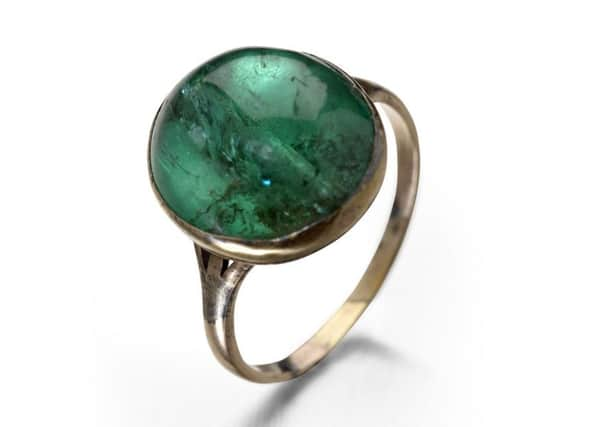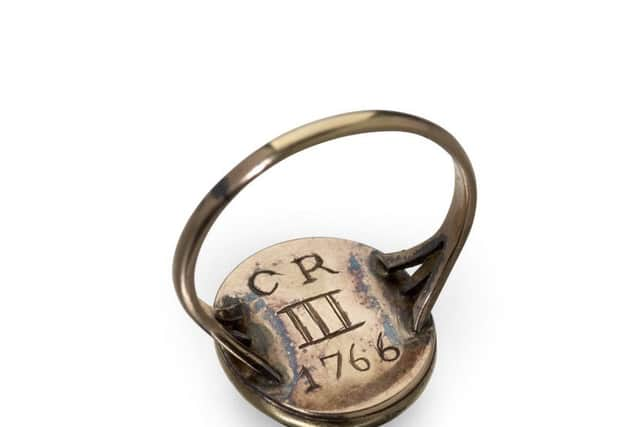The emerald ring of the Jacobite secret service


The piece, which came up at auction in Edinburgh several years ago, was used as a form of signature when travelling with correspondence from Prince Charles.
With Jacobite-related documents devoid of signatures or seals to protect carriers from accusations of treason, the cabochan emerald ring indicated the papers were official and had originated from the Jacobite leader.


Advertisement
Hide AdAdvertisement
Hide AdA spokesman for Lyon & Turnbull Auctioneers, who sold the ring for more than £14,600 - around five times the amount expected, said: “This Jacobite secret service provided an invaluable service to Charles who had to keep all his loyal supporters abreast of his plans and movements.”
The ring is marked with the cipher of CR III 1766 - the year that Charles’ father James dies in France.
From then, Charles considered himself the rightful King of Scotland and gives himself the title King Charles III, rather than Prince of Wales which even in exile he still used.
The spokesman added: “Even after this final defeat at Culloden, Charles and his father James for many years still held hopes to overthrow the English rule of Scotland and planned for another attack on the throne to claim back their rightful place in Scotland.
“These plans were not helped by the outlawing of Scottish traditions by the victorious English monarch and the fact that the reprisals for supporting the Jacobite cause included death.
“The population which backed Prince Charles had to find other ways to show their support in secret and this is where the wealth of poetry and songwriting blooms.
“Neither James nor Charles’ names were ever uttered but the significance was not lost to the supporters.
“This theme carried on to the applied arts in crafts such as silver, carvings, glass and jewellery.
The ring was put to auction by a collector who bought the piece from a private museum in the Montrose area, from where it is thought to originate.
